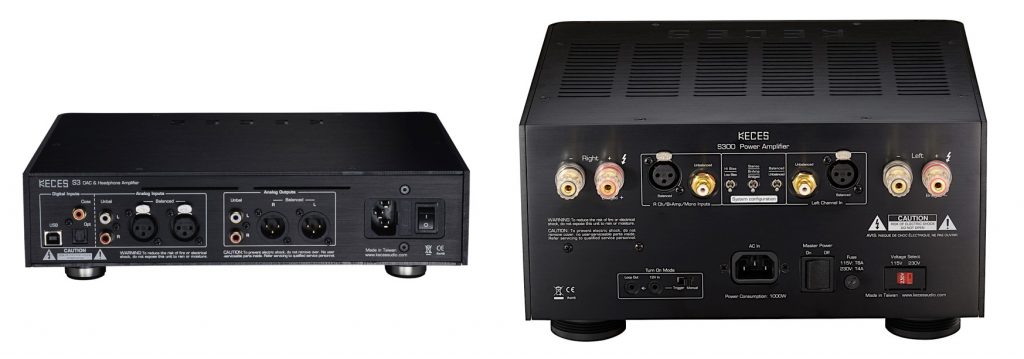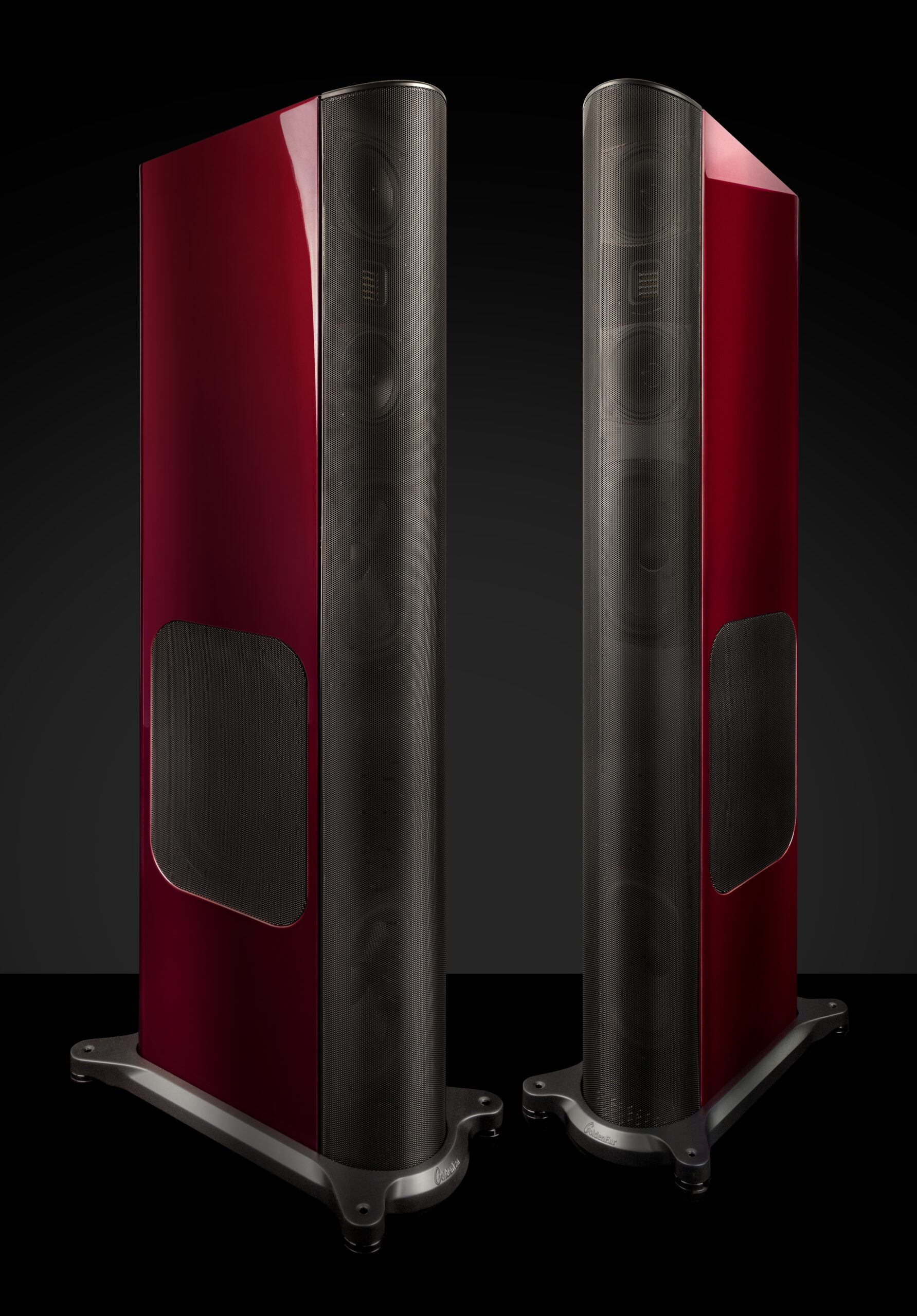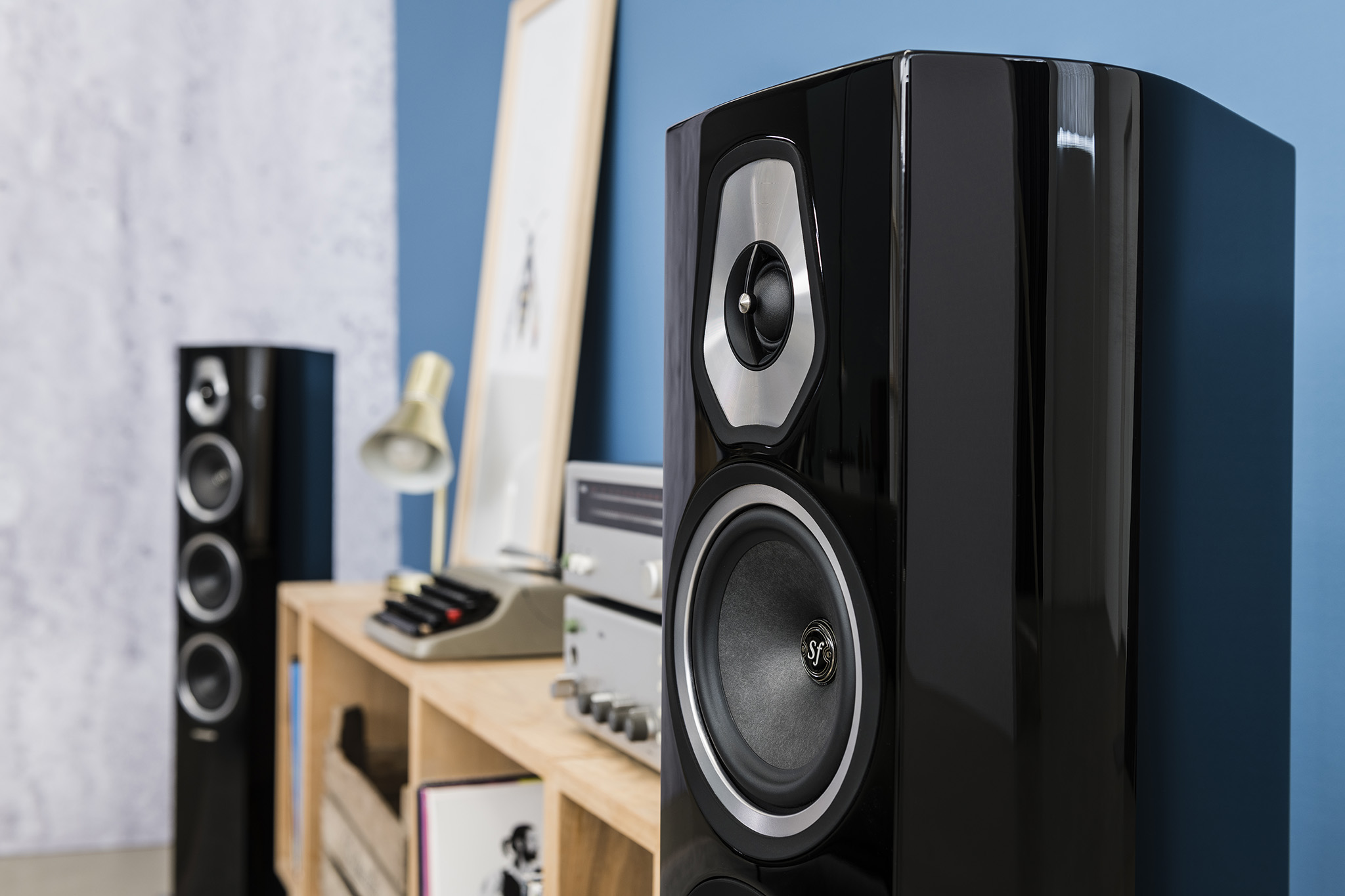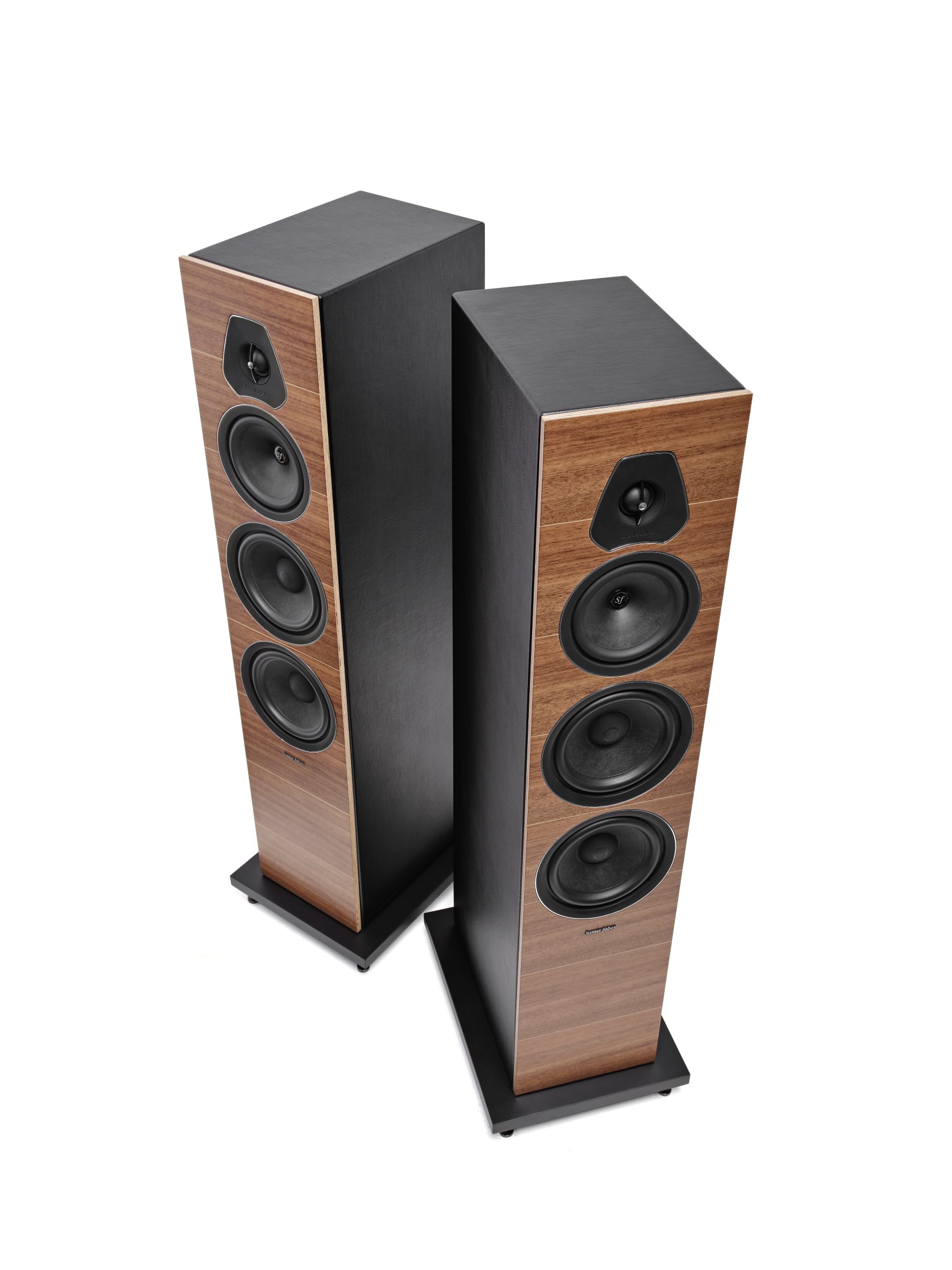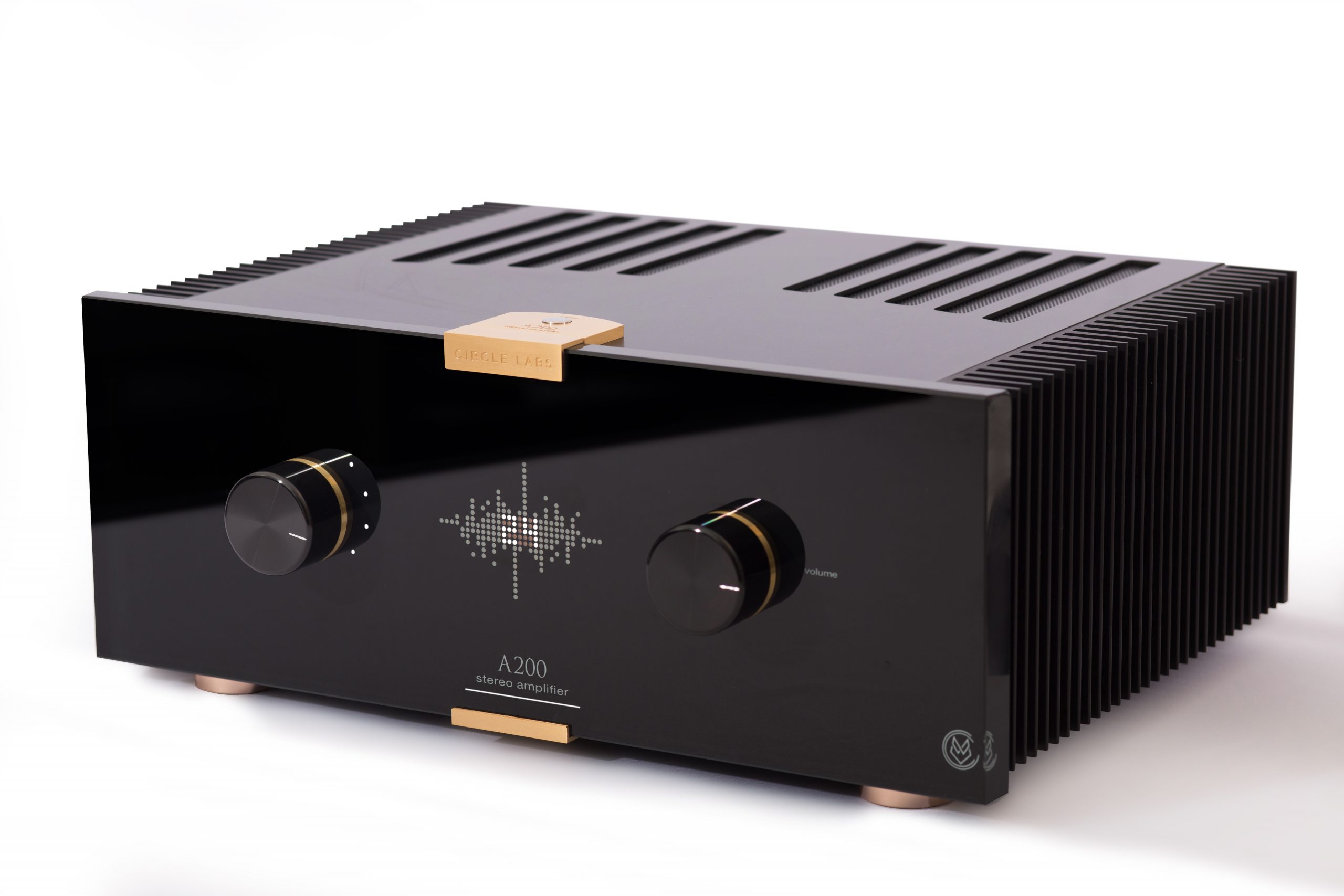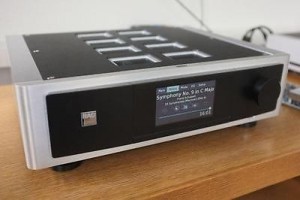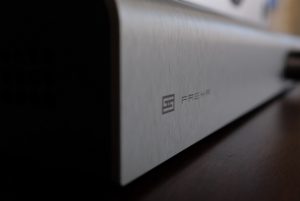"Holistic." "Quiet." "Transparent." Those words are my attempt to summarize the KECES S3 Preamplifier/S300 Combo: A delightful possibility for those who need a simple solution for a powerful, high fidelity system, with excellent headphone performance. As with the KECES E40 integrated amplifier (HERE), the minimalist nature of the Taiwan-born S3, and S300, fits into the culture of quality over quantity, with zero excess.
This and That
I believe PF readers are a classy, well-educated lot who are also resourceful and diligent. It seems best to leverage this understanding to, "get to the meat-and-potatoes," by providing the links to the core information for both the S3 and S300. This will keep the "copy-pasta" information from KECES's thoughtful website from showing up here, and will (I hope) make this run-down more enjoyable.
The dimensional information, as well as the "marketing sheet" information, for both the S3 and S300, may be found HERE. However, it is worth highlighting a few details on both pieces' information sheets that build their value well.
The S3 is a very good headphone amplifier. It made my Grado SR125e cans sing as I have never heard them sing before. The headphone performance, in all perceivable sonic aspects, was superior to the Parasound Halo P6 (HERE), which also has a very nice headphone section. The S3 also surpassed the performance of a Bottlehead Crack Headphone Amplifier that a friend was gracious enough to let go of for a week or so.
Admittedly, I am not a headphone expert, nor am I looking to be one. However, what I heard in performance with the S3, when switched into headphone mode, which removes power from the preamplifier section for lower noise, made understandable the lore of a headphone-based system (I was unable to audition the balanced headphone amplifier section). Based on my experience with KECES products, I feel comfortable extrapolating what the balanced headphone performance brings, and would say: At $1400, the S3 should be considered, even if one were only looking for a high-performance headphone amplifier/DAC combo.
The S3 also includes a very capable, high-resoultion DAC that utilizes its ESS ES9026PRO chipsets' default analog filtering. This DAC, via USB (though it does support coax and optical inputs), will support PCM up to 32bit/384kHz, DSD128 in DoP, and up to DSD256, ASIO-Native.
The S3 also has a stepped volume control that uses 24 relays to create 128 steps of fine attenuation. Thanks to this approach, channel balance and separation is surgically accurate. The single set of balanced / unbalanced (you get to use one or the other) inputs is functionally limiting, and perhaps a small phono section would have put the S3 in the "over-the-top" value category. However, smart planning can overcome these shortcomings if you are going to use the internal DAC of the S3 and a separate phono pre-amp (I hear KECES makes some pretty good phono preamps, such as the Ephono (HERE), as reported by PF Associate Editor Francisco Duran).
When first looking and tinkering with the S3, it appeared as though it is a headphone amplifier morphed into a pre-amplifier as a feature—just because they could. However, that is not the case. Despite its sleek, small form-factor, the S3's sonic performance when driving an amplifier, such as the KECES S300, is as quiet and capable as its headphone performance. It is evident that KECES put a significant amount of effort into the S3's design as a line-stage.
The $2800 S300 amplifier is a new offering from KECES. It is stout, matching the small footprint of the S3, but built up vertically. Both units stacked are still able to fit neatly on a desktop, but with a combined weight of 40 pounds, it should be a sturdy desktop. Most of the S300's weight comes from its massive power supply, boasting a 1.2kVA transformer, and also from solid aluminum chassis of both the S3, and S300 which aids in blocking RF interference.
This physically small amplifier packs a heavyweight punch. While rated at a conservative 130 watts per channel into eight Ohms, and 225 Watts per channel into four Ohms, its peak current capability of 45 amps per channel tell the real tale of this amplifier's deliverable performance. It is a class A/AB amplifier, which makes its compact nature even more interesting. There are a lot of electronics in a very small space which, on paper, should not be a good thing. It is a showing of KECES' competent engineering discipline to fit an A/AB amplifier in a small package, which normally can only fit noisy, class D amplification.
Speakers are essentially electric motors; they need current to create the force required to reproduce the dynamic range and control we are looking for in music. This does not occur linearly in a loudspeaker, due to the very nature of loudspeaker drivers. An amp needs serious current to keep control of the music. It is a common misconception that high current demand always occurs in the bass regions of the music. A demand for significant current can begin to occur in the lower midrange, too.
A great example of this phenomenon is with the KEF LS50 anniversary edition. It is easy to think a small, 2-way loudspeaker from a legendary company would be easy to drive; however that is not always the case. There is a problematic impedance (combination of phase angle, and resistance in Ohms) just above 100Hz. While things tend to smooth out from there, by 300Hz (which is critical lower midrange-just above middle "C" on a piano) the impedance is still below five Ohms, and the phase swings in the other direction as the inductive nature of the woofer takes control of the impedance. All this electrical complexity does not make the LS50 anniversary edition a bad loudspeaker. In fact, it is par for the course. What it does mean, however, is for a speaker rated as "nominal 8 Ohms," this speaker is a fairly demanding load. The LS50 would be happier with an amplifier that is fully capable of driving a 4-Ohm nominal load.
The ability to drive complex, ever-changing loudspeaker loads is truly what separates "adequate" amplifiers from great ones. Watts do not always tell the full tale of the tape. The Parasound A21+ (HERE) will deliver 250 watts, the S300 gets you 130 watts, and the Bricasti M15 (HERE) is rated at a measly 125 watts, all into 8 Ohms. This all seems counter intuitive since the M15 is head and shoulders above both the A21+ and S300 in quality performance and all-out drive (as it should be for five times the cost). The take-away here is to watch the watts, they are not always a tell-tale sign of real, functional amplifier performance. I found the S300's watts are definitely those of quality performance.
The S300 also has a selectable "high bias / low bias" mode. In High Bias, the S300 will give you its first 5 watts of dual-mono power in class A. I have wracked my head for a reason to make this selectable since the high bias mode makes the S300 delightful, while low bias made it a bit sterile… At least in my system.
Other notable features: The S300 is bridgeable to be used as a 410-watt mono-block amplifier; there are no capacitors or inductors in the signal path, and overall build quality surpasses what I would expect at its price point. My biggest bugbear with the S300 is the screaming bright, blue LED on the front of it. Nothing a little tape cannot fix; however, I do wish manufacturers would move away from this and opt for a more subtle indicator approach. In reflection, if my nit to pick (which seems a little "Princess and the Pea") is the LED indicator, that means the S300 must be a great performer!
Auditioning Setup
I benchmarked the Performance of the S3 against the Parasound Halo P6, and the S300 against the Parasound A21+. The Parasound offerings are extremely heavy hitters in the value department, and ball-park financial competitors of the KECES offerings. The whole quagmire was a muddy mix of varying results.
For example: The A21+ made the S300 sound as if it lacked authority, and the S300 just could not keep up when driving a demanding 4-Ohm loudspeaker such as my reference loudspeakers. However, the S300 was far more surgical in its ability to render inner detail and spatial information on those very same loudspeakers. This quality of the S300 made the normally quiet background of the A21+ seem as if it was dark grey instead of black. I decided to level the playing field by using a less-demanding loudspeaker (10" 3-way, instead of a dual-10" 4-way) and this softened the contrast a bit. In this case, the S300 was akin to a lively summer sunrise, and the A21+ was its complimentary sunset. Mind you: A 10" 3-way loudspeaker is still no walk-in-the-park to drive, so the S300 was showing it was not going down to one of the most critically acclaimed, value-based amplifiers without a fight. Impressive.
The S300 seems to fit best in a system with moderately demanding 4 Ohm, or 8 Ohm speakers, where the listening habits tend toward refinement, rather than raw power. This puts the S300 where it needs to be in terms of value.
On a personal note: I am persnickety when it comes to amplifier control of the loudspeaker, and it is an aspect of the sound I am extremely tuned into. To my ears, one of the worst sins I hear from affordable amplifiers is a lack of strict control from the lower bass through the mid-bass. The latter affecting things like male voices, trombones, snare drums, cellos, etc. Luckily, I found these issues to be non-existent in the S300 when playing through the 10" 3-way showing it will happily drive just about anything that it will likely be used with.
The S3, well, is something a little more sonically special. So much so, that I had to try it with my Bricasti M15, which, ultimately, paired with the S3 rather well. That alone made the DAC in the S3 a better performer than the Parasound P6 (though I must emphasize the P6 is no slouch), and was reminiscent of one of my personal favorite DACs of all time: The Grace M920. It is in this sense the S3 was able to demonstrate value as a sonic performer, despite its lack of ins, outs, and other control features typically found in preamplifiers at its price tier.
The presentation of the S3's DAC is graceful, and casts a very desirable silhouette when the light of a fine recording shines upon it. Running the Bracasti M1 DAC through the S3 as a stand-alone preamp preserved more inner detail, and presented a quieter background than the Parasound P6, too. As with the E40 integrated amp, the KECES S3 builds its value by removing frills, and simplifying features. This yields a sonic result that exceeds its price point, for those looking to build a minimalist system with maximum musical presentation.
I found there were very few quirks with the S3. The biggest of them was putting the battery into the very elegant remote. While separating the two halves of the remote, it quicky became apparent the buttons were not kept in the remote cover, when they fell out and scattered on the floor. This would not have been a bother, except my cat's hunting instincts were immediately stimulated by the arrival of shiny, well machined, discs bouncing about… And a hunt ensued. The whole experience was comical in hindsight, and the biggest frustration birthed from this side-show was the delay in listening.
It is a pleasure to report that when sealed back up, the remote is lovely and confident. At the very least, it is as confident as the audible relay "clicks" the S3 releases with every step up and down in volume. From the listening position this was not a distraction, and was masked by the music once a reasonable listening level was achieved. It is better to have the audible "click" while changing volume, than a less precise method of handling attenuation that introduces more noise into the music instead. The theme continues: Another smart decision by KECES.
All that Matters: Listening
To indulge in the musical experience of the S3/S300 combo, I chose to stick with the 10" 3-way loudspeaker of my own design. This design features a midrange in a U-baffle configuration, and quality drivers packed into beat-up, repurposed Cerwin Vega DX-7 cabinets that I extensively braced and dampened. The original grills fit over the whole speaker creating the illusion of a 90's rock speaker, which then surprises the listener with all-out high-fidelity performance.
The speaker cables I used are a high-purity 8AWG copper in a multi-twisted, rope-lay construction. They are sourced directly from a raw cable supplier. I have come to enjoy these as my everyday listening cables, because the extremely low resistance and capacitance yield a soundstage and inner detail I have only heard rivaled by Cardas Clear (HERE) loudspeaker cables. I used Cardas Clear balanced interconnects between the S3 and the S300.
Recently, I joined the streaming service Qobuz (HERE). Aside from a near-flawless, intuitive user interface, their "Hi-Rez" offerings are superb. I have found it very difficult to pinpoint gross differences between Qobuz and my personal library on a music network. Not only do I now have access to a whole lot of Hi-Rez music, but Qobuz stays up-to-date with Current Releases.
One of the recent releases that caught my gaze was John Williams in Vienna feat. Ann-Sophie Mutter, composed by John Williams, and performed by the Vienna Philharmonic. This August 2020, 96kHz/24-bit release contains thirteen tracks of John Williams' famous music he so carefully composed for classic movies such as Close Encounters of the Third Kind, Jaws, Jurassic Park, and dare I say: Star Wars!
I have been on a mission. My "Yodas" have taught me how to use the musical force over the years. However, no matter how hard I searched (and meditated on the force as instructed) I could never seem to become a Musical Jedi.
Until now… I have found a recording, and performance, of the "Main Title" from Star Wars: A New Hope, that is all the glory one could ever imagine! Perhaps this is thanks to Deutsche Grammophon for such a well-engineered work, or maybe it is because the 87-year old John Willams is conducting the orchestra himself and translating the literal meaning of his music during each track like a Jedi master. I believe the reason matters little, because It is with this album discovery, I feel I have finally reached the title of "Musical Jedi."
The S3/S300 delivered like a brand new "X-Wing" too… While I am tempted to continue with horrific Star Wars references, we will leave them be, moving forward. What impressed me most about the S3/S300 was the top-to-bottom coherency of the music, while preserving a very wide, and engulfing soundstage. I found the timbre to be mint chocolate chip ice cream instead of regular chocolate chip. The hint of mint added a nice bite to the horns that made them appear to have incredible dynamic range. More than I would expect out of a $4200, complete system. Where the S3/S300 combination excelled was in the fleshing-out of fine details. The background is extremely quiet, more so than I expected to hear from this combo, but not surprising since listening individually both are of a quiet, gentle nature.
While we are talking ice cream, the creamy character this duo possesses allowed the strings to breathe freely. I found the low-end response to be well controlled, and in congruence with the rest of the music. Even when pushed to theater-like levels, the S300 remained gently warm to the touch. On a completely unrelated note, the next track popped in my head abruptly, though it was sadly ruined by bad acting in a GMC television commercial. Is there nothing 2020 holds sacred?!
The Who needs no introduction here, "Eminence Front" is a track off their 1982 album It's Hard. While it is no "Pinball Wizard," it shows the same talent in writing that pits a toe-tapping, synthesized groove against powerful lyrics. The 96kHz/24-bit remaster from Geffen is very nicely done. I found the S3/S300 duo to fare above average here as well. It is so easy for the lyrics and guitar work to get lost in the very dominating synthesizer. Further, with the synthesizer playing sixteenth notes throughout the entire song, the entire work can become a sonic mess, and lose its hold on the listener. Much of what makes this song so interesting stems from its dynamic cues, so they MUST be preserved. I was very impressed with the S3/S300 on this one and found myself head-bobbing to the back-beat groove as the drums took over from the synth to carry the rhythm.
1970s and 1980s rock can be akin to daggers in the ears on many HiFi systems thanks to the fleshing-out of flaws in old recording processes. This seems to be where the appeal of vintage equipment lies. While vintage equipment usually has "adequate" resolution, it rarely brings out the deep, inner details well. Add vintage audio's tonality, which tends toward the warm side of the spectrum, and it is the perfect storm to rock out to, or enjoy less than ideal classical recordings on that tended to be recorded on the bright side.
In modern HiFi equipment, when there is plenty of dynamic headroom combined with low distortion, as there is in the S3/S300 combination, there is a listenability that resembles vintage HiFi despite the recording flaws being on display. The good in this is the audible subtleties of the musicians' talents, who did not have the near-infinite digital tracks today's artists have to record on. Artists of the "classic rock era" had to showcase their mastery in every note to make sure it is meaningful. I ended up listing through several more classic-rock tracks, because I found with the S3/S300, the inner detail without the ear fatigue was a sign of something that was truly special.
While far removed from the talents of the past, I do find some modern music to be very creative and enjoyable. Billie Ellish's musings fall into this category. "Xanny," off her debut album WHEN WE FALL ASLEEP, WHERE DO WE GO, is a jaundiced look at the over-medicated world of late teenage anxiety. The over prescribing, abuse, and reliance upon anti-anxiety medications are real social problem today. Billie creatively addresses this sensitive topic well: lyrically, musically, and in performance.
I love this song's creativity, right down to the scare I had when I first herd Billie's voice modulated by the massive bass line during the chorus. This modulation is a brilliant representation of the fuzziness, or cloud that anti-anxiety medications can put you in. When not making the lister feel as if they are in a drug-induced haze, she very cleverly scolds the behavior of abusers… While she is just standing by… Drinking a Coke. The whole song is a stellar recording, right down to the piano that shows up during the bridge, and a massive test of a system's capability in every definable aspect.
The S3/S300 did a fantastic job fleshing everything out, while maintaining a dynamic snap to the drums. Billie's overdubbed choral sections were masterfully resolved without smear, and the bass had all the authority and control you could ask for from a system in this tier. It did lack a touch of all-out drive when compared with the Parasound A21+. However, I preferred the S300 in this circumstance. Billie Ellish is quite a good artist, and she understands that the silence, and space between the notes is just as important as the music itself. In much of her music, she leverages this as an unplayable instrument. Capturing this properly as the S300 does, is worth a touch of softening in the bass response. The bass was in no way lacking, it was just not as extreme as with the A21+. So continues the theme with KECES, knowing exactly where to squeeze and mold their products to provide the highest possible fidelity at an affordable price point.
A Journey's End
At $1400 for the KECES S3 preamplifier / headphone amplifier, and $2800 for the KECES S300 power amplifier, there is quite a bit of value built in both pieces as a complete system. The overall fidelity of this pair is above their respective selling points. If you are looking for a small format, but serious HiFi system, this would be for you. In the S3, the performance does come at the expense of features like a built-in phono stage, home theater bypass, or multiple analog inputs. The S300 is not a monster powerhouse, but has ample, quiet power and headroom to drive any reasonable loudspeaker.
The S3's individual components (headphone amplifier, DAC, and preamplifier) could sell for $1200 each, and be a competitive value. I cannot recommend the S3 highly enough, and may be one of the best values in high fidelity I have heard to date. The S300, is a very good competitor for its class of amplifier, and should be a consideration if you are looking to maximize overall fidelity.
I want to extend a special "thank you" to Ronald at KECES. I have been sitting on the S3 for nearly a year, awaiting the arrival of the S300. I hooked up the S3 briefly, then felt an urgency to evaluate it as a complete system with a KECES amplifier because I did not want its lack of inputs to overshadow its performance. I stand by this decision, as it worked out exceedingly well. I am very grateful there are companies like KECES who are in sync with publications like PF when it comes to the preservation, and reproduction of beautiful music. As always: Happy listening!
S3 preamplifier/headphone amplifier
Retail: $1400
S300 power amplifier
Retail: $2800
KECES, a division of HUIKANG ELECTRONIC CO., LTD.
1F., No.2, Ln. 313, Sec. 6, New Taipei Blvd., Taishan Dist.
New Taipei City 24355
Taiwan
+886.2.2901.1018





